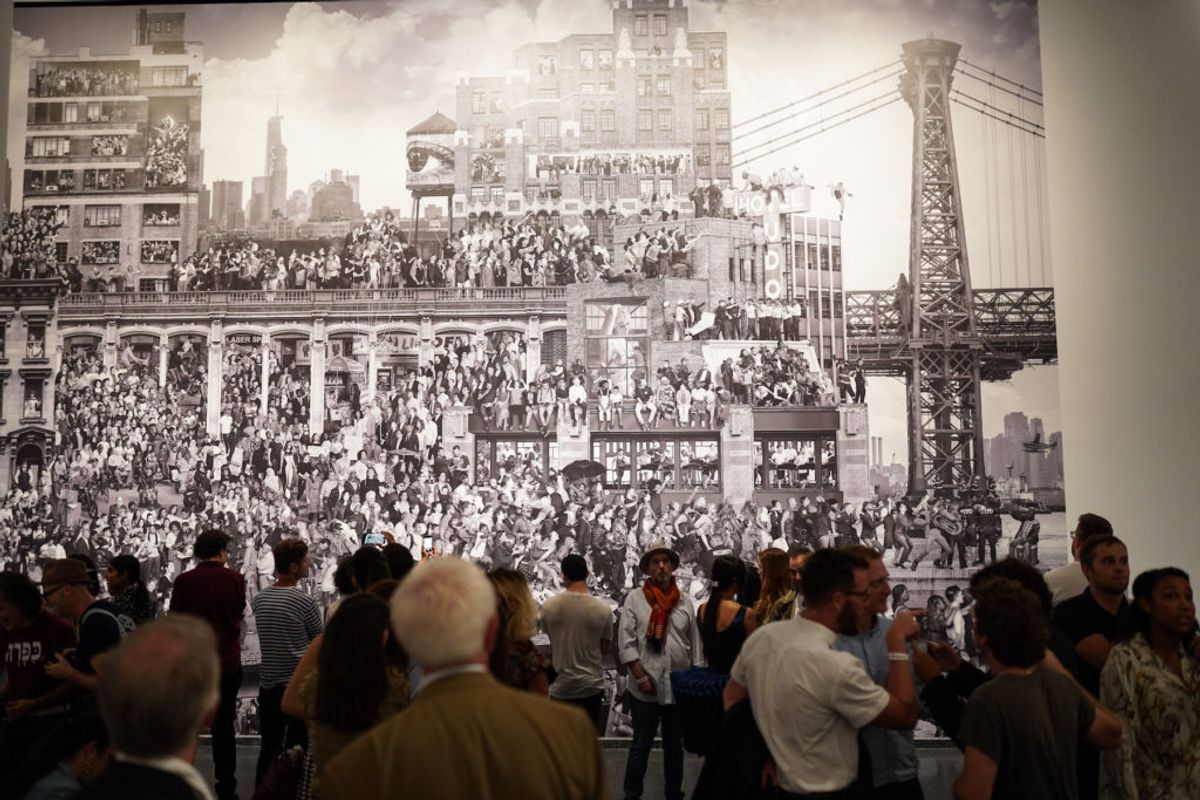Many museums around the globe are temporarily closed. Exhibitions are being cancelled and postponed. Budgets are being slashed. Earned income is in doubt. Philanthropy is in question. How do we conceptualise and organise exhibitions in our changed world?
Over the years, the blockbuster has been frequently called into question, and with good reason. Do these shows really serve our audiences or do they just pander to the crowd in order to attract large numbers of visitors? The motivation for, and sustained presence of, the blockbuster exhibition has derived from two primary urges: first, to deliver invigorating and uplifting experiences and ideas through great works of art, and second, to draw audiences to generate revenue. These drivers will remain in our new reality, and, in fact, they will be more urgent than ever.
Going forward, we need to reimagine and adapt blockbuster exhibitions, thinking instead of creating “must see” exhibitions. At the Brooklyn Museum under Anne Pasternak’s leadership, we have focused our thinking around this concept, presenting shows that offer unique and desired experiences, while also advancing our mission, especially in a city with many incredible cultural offerings. While still focused on generating revenue, this approach shifts the emphasis from attendance numbers (the block busting) to visitors’ needs and interests. What do they want to see? What will excite them? What will compel them to feel like they have to see something exceptional and special? We have developed criteria to help us evaluate proposals, leading always with how an idea connects to our mission—“to create inspiring encounters with art that expand the ways we see ourselves, the world and its possibilities”—and a matrix that considers the overall costs and staff investment relative to the attendance and visibility impact we anticipate to ensure our shows are on track with this strategy.
Museum audiences will continue to crave experiences that motivate the “blockbuster” show—a desire to learn, to be inspired, and, yes, also to have fun. As Attract Research’s recent study of New York City residents who attend museums at least once a year demonstrated, museum-going audiences strongly intend to return within the coming months, even while remaining concerned about feeling comfortable in large, public spaces. As such, we anticipate that visitors will continue to seek dynamic art experiences, even if those experiences are different from pre-COVID ones.
The second motivator in creating “blockbuster” exhibitions will be, unfortunately, a continued reality for most museums. Many museums have historically staged these shows due to historical and structural financial gaps. In the COVID and post-COVID world, museums will face even greater reductions in contributed income and earned revenue. As a result, nearly all will need to rethink their operating models to fill increasingly large gaps between revenue and spending as philanthropy alone cannot match the costs of operation.
While audiences often have strong ties to the collections at their local museums, most visitors seek out the new experiences and ideas more commonly found in special exhibitions. With international and even domestic travel limited, museum audiences are likely to become hyperlocal with increased appetites for engaging, dynamic experiences in their backyards. In order for museums to continue to generate earned revenue, they will need to continue to offer new, compelling reasons to visit, and to return, even if the overall attendance numbers will be lower due to safety protocols and physical distancing guidelines.
Even before COVID, the Brooklyn Museum developed a new model for exhibitions, beginning with the premise that high organisational costs, which have often characterised blockbuster exhibitions, are not necessarily required to achieve “must see” excitement. We have accomplished this consistently by drawing on our collections, presenting bodies of work from a single source, and/or collaborating with partner institutions. As major international loan exhibitions are being cancelled, especially those with multiple lenders, high insurance costs, and complex shipping and logistical concerns, keys to future success may include single-lender collection presentations (or at least fewer lenders), incoming traveling exhibitions, thought-provoking collection activations, and contemporary artist projects. These approaches minimise the overall costs, ultimately yielding a higher return on investment. Perhaps most importantly, they also reduce the carbon-footprint of exhibitions.
Museums like the Brooklyn Museum that have depths of collections can also travel their collections to create must-see urgency elsewhere, allowing them to broaden their mission, and to reach audiences who may not have the means or access to such masterworks. It also offers opportunities to share objects from storage, create partnerships with other institutions, and see some modest financial return for organising the shows. Hosting institutions are able to offer their audiences new work to see, while incurring relatively low risks and costs with a single lender/organiser. While travelling exhibitions involve a trade-off for the organising museum (and its audiences) with the absence of those works for a period of time, perhaps it is even more necessary now as a service to the field to share our collections.
This current pandemic offers an opportunity for an exhibitions reset—a moment to rethink how we can continue to serve our audiences while also continuing to generate revenue to keep our doors open. We have an opportunity to reimagine different exhibition models, while still providing similar motivators that originally drove the blockbuster trend. Those who cherish visiting museums will want to return to a sense of normalcy, and to return to their local museums once again. Their favourite collections, along with the must-see exhibitions that often drive their visits, will be there waiting for them.
• Sharon Matt Atkins is the director of exhibitions and strategic initiatives at the Brooklyn Museum


